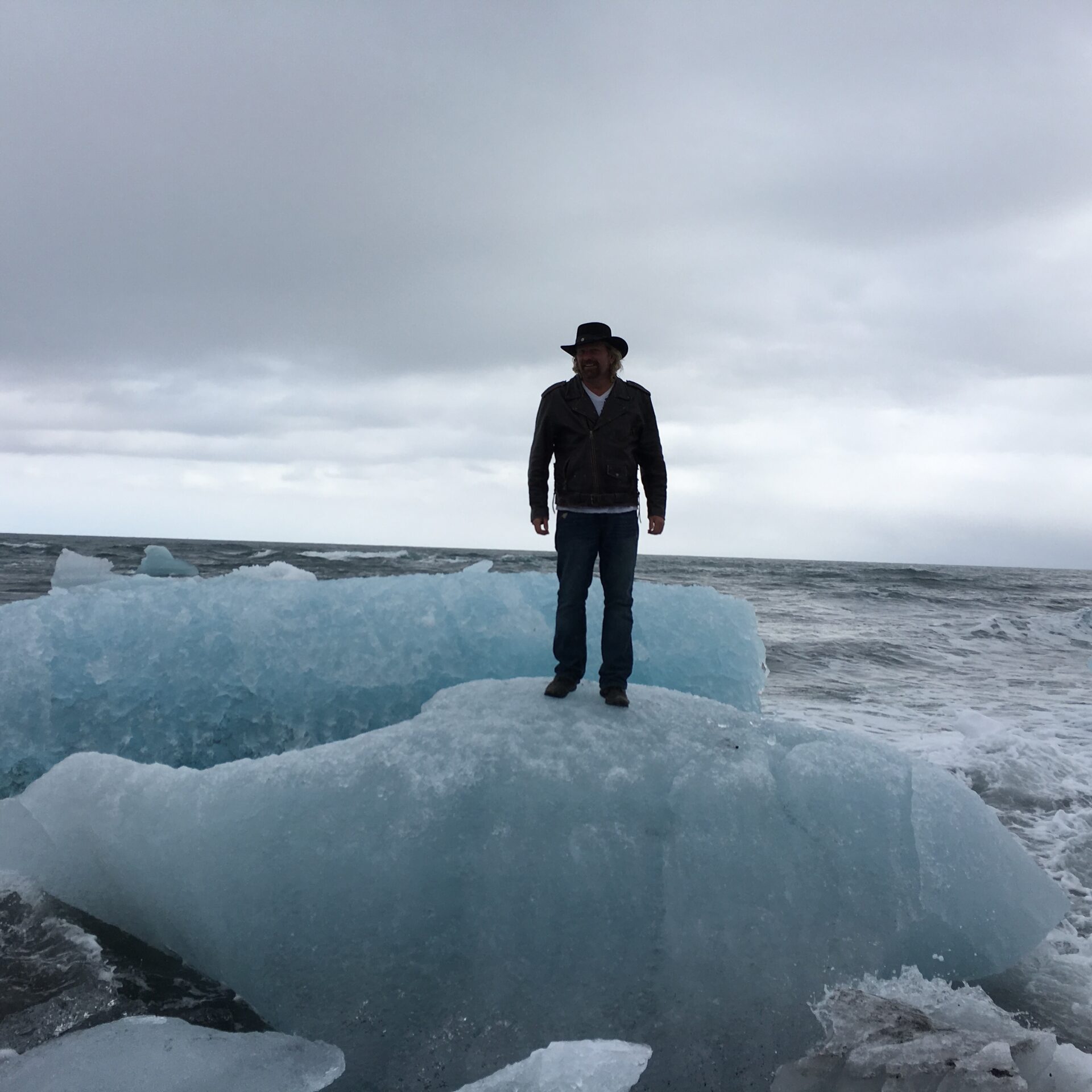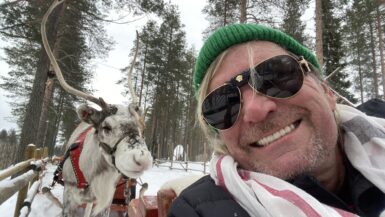Iceland used to be a destination for only the most intrepid travelers; perpetually chilly, geographically inconvenient and generally misunderstood, this Scandinavian outpost’s tourism has quadrupled in less than ten years. Last year a million visitors stopped in at Reykjavik. That may not seem like a lot: until you realize that the population is only 320,000. So, what’s all the fuss about? Should you visit Iceland?
I just spent a few days traveling in the south of the country. Iceland’s main attractions are concentrated in the southwest corner of the country, but if you’re feeling adventurous and money is not an object, you can fly around the country, explore glaciers, visit an ice cave or lava tube and even dive in volcanic rift formations. There are things to see and experience in Iceland that you can’t find anywhere else. You can have plenty of adventure just renting a car or hybrid camper van and driving around the ring road that connects the country. Car rental prices are reasonable and there’s plenty of wide open spaces and free parking.
Wow Airlines and Icelandic Air both offer free stopovers on a trip from the US to Europe. Why not toss in an extra mini-vacation on the way to your other vacation? At my time of booking, flights from Boston to Reykjavik were $99 each way with Wow Airlines. Granted, there was nothing fancy and no extras, but the seats reclined and the staff was very pleasant. There’s not a lot of civilization between the scattered towns once you start exploring the country, but the scenery is unlike anything you have probably seen before. Volcanic action and glaciers have carved out bizarre formations that give the country a rugged almost alien landscape. Jokulsarlon is an amazing iceberg filled bay that’s been used as a setting for two James Bond movies. On the ocean side of the bay, one can get close up and personal with the clear blue iceberg chunks that have washed up in the beach. Playful seals splash around and mug for the cameras.
The English word “geyser” is borrowed from the town of Geysir which has bubbling steaming pools of sulphuric water and yes, you guessed it, a geyser! Strokkur faithfully erupts every five minutes or so for happy camera-toting tourists. Nearby Gullfloss is The country’s most impressive waterfall and and is touted by the tourist board as an equal of Niagara Falls. If you love waterfalls, and who doesn’t? They can he found everywhere in all shapes and sizes. As you drive along the main road, there’s dozens of waterfall spots and scenic areas to stop and explore. Best of all, almost all of Iceland’s scenic vistas are free. The only exception I found was a small water filled volcano on the Golden Circle route that charged €4 p/p. After hours, the gate stayed open for free.
Iceland has food choices you’re unlikely to find anywhere else. Topping the list is rotted shark. Not a popular choice for tourists due to his high ammonia smell, it’s still consumed by the locals as a truly Icelandic rite of passage. Smoked puffin is on some menus as a delicacy. You’re likely to come across reindeer meat, whale steaks and even random cooked shore birds in some of the traditional eateries. There’s horse steaks too. In Reykjavik, there’s lots of “normal” bistros, pizza places and other food choices, but expect prices to be almost double what you’d pay in Europe. Outside the town, there’s not much of anything except gas stations that sell a few sandwiches and snacks. Liquor is very expensive as well, so it’s a good idea to stock up at the duty free shop before you leave the airport.
Hotels are reasonably priced but your choices might be limited in high season. There’s not a lot of large towns outside the capital, so it’s wise to make a plan before you get too far from civilization. Some of the towns that appear large on the map, might in actuality be nothing more than a few homes, a church and a gas station. Some adventurous travelers opt to drive the entire circumference of Iceland. There’s not a lot of roads that journey into the interior. Many of the ones that do exist are only navigable in the summer, require a 4WD, and are verboten by the car rental companies. Most travelers allocate about 10-12 days to circumnavigate the whole island but you can realistically visit most of the highlights of the country in a few days on the southern section of the country if you don’t mind driving 5-6 hours a day. Most of the attractions on the route are fairly well marked, but it’s a good idea to be familiar with the sites before you invest your time going down a rugged road toward a place with an unpronounceable Icelandic name. If you take the time to learn a few words of places in the Icelandic language, you’ may soon realize that foss means waterfall, jokull means glacier and vik means port, etc. This bit of knowledge usually identify what kind of place you’re going.
Near Reykjavik there’s boats that and ferries that can take you to see puffin colonies and whale spotting. The capital itself is full of shops, lots of outside art, and some interesting buildings such as one of the strangest churches on the planet, the Hallgrimskirkja. There’s a nearby town called Hellisheidi that uses geothermal power to create electricity for most of the country (it’s the 3rd largest geothermal plant in the world) and has some hot natural pools to escape from the chilly winds for a while. Some travelers use these places as a base and take advantage of the long summer days to explore surrounding areas.
The number one tourist attraction in Iceland is Blue Lagoon. You’re unlikely to spot Brooke Shields at THIS Blue Lagoon but you’ll see the ads for it the moment you arrive at the airport. This volcanic oasis is created by natural minerals and geothermal water that seeps to the surface to create a surreal iridescent blue bathing pool. The lagoon is reputed to help skin with anti-aging and other benefits. Besides the pool areas, there’s a hot waterfall, steam sauna, spa, and hotel hidden amidst the black lava rock formations scattered in the area. The attraction has bridges and gradient beach-like entries for easy access. Your visit comes with a high-tech bracelet that allows you to access your locker and get drinks and other extras without having to deal with cash. There’s a little booth in the middle of the blue steamy lagoon that allows guests to spread a natural silicon or algae treatment on exposed parts of the body. I’ve got to say, the Blue Lagoon was a great way to finish off my trip to Iceland. After all the cold places I visited, a hot mineral bath felt really really good.
Is Iceland really cold? Yes. Even in the summer it can be fairly cool. I’d make sure I had a jacket packed since the weather can change in an instant and some areas can be very windy as well. Is it worth it? You won’t find anyplace like it in the world and it’s a great country to see unspoiled nature. If you’re coming in the winter, you have an opportunity to see the northern lights. Iceland is one of the most accessible regions in the world to witness this amazing phenomenon. If you’re arriving in the summer, it’s likely to be daylight for 24 hours; which gives you a lot of driving time.
And did I mention it’s a free stopover? If nothing else, you can always grab a refrigerator magnet and add a new stamp to your passport.






Leave a reply
You must be logged in to post a comment.